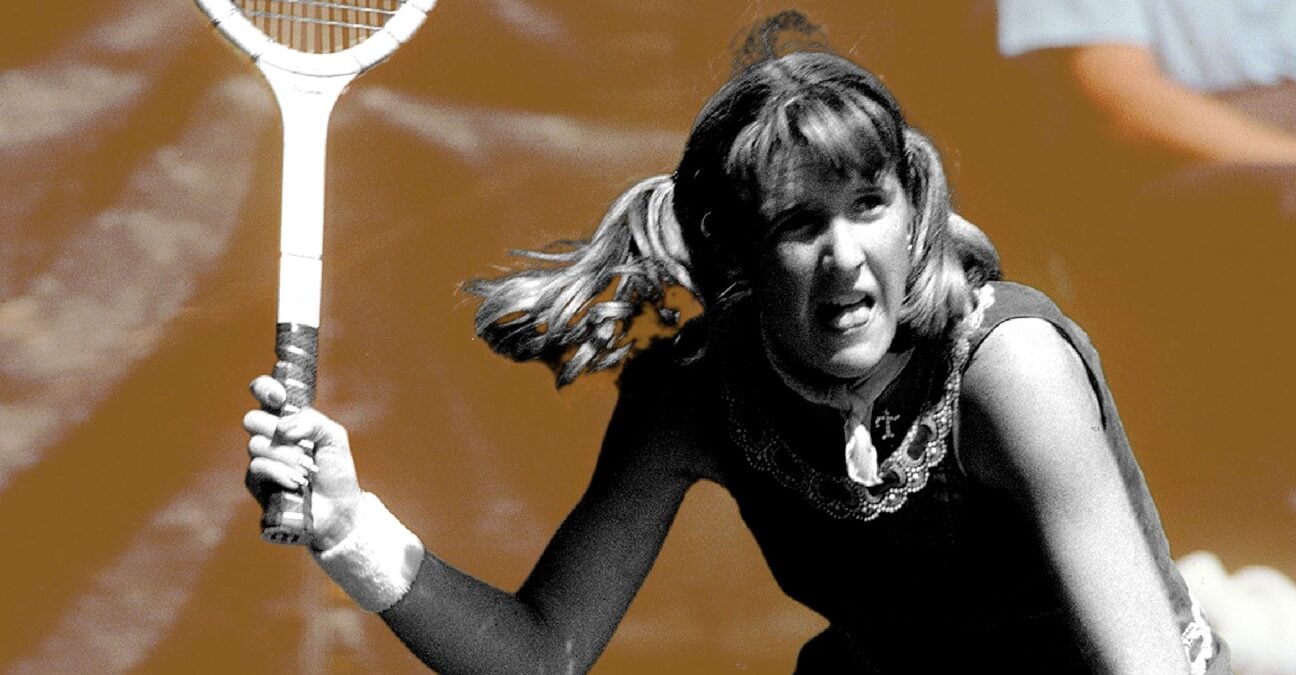May 12, 1979: The day Tracy Austin ended Chris Evert’s 125-match clay-court winning streak
On this day in 1979, a pig-tailed 16-year-old named Tracy Austin shocked the most dominant clay-courter in tennis history, ending Chris Evert’s 125-match winning streak on clay in Rome
 Tracy Austin, On this day 07.01.2021
Tracy Austin, On this day 07.01.2021
What happened exactly on that day?
On this day, May 12, 1979, in the semi-finals of the Italian Open, 16-year-old Tracy Austin put an end to Chris Evert’s 125-match winning streak on clay court. To achieve that feat, the teenager came back from 4-1 down in the final set, before she prevailed in the deciding set tie-break (6-4, 2-6, 7-6). Evert had not been defeated on clay in almost six years, since the summer of 1973.
The players : Tracy Austin and Chris Evert
- Tracy Austin: The young American prodigy, ranked No 4 in the world
Tracy Austin, along with Pam Shriver, was one of the American prodigies of the late 1970s. Born in December 1962, she played a game style similar to Evert’s: she was extremely patient and precise from the baseline, trying to wear down her opponents physically and mentally. Austin claimed her first title in January 1977, defeating Stacy Margolin in the Portland final (6-7, 6-3, 4-1 ret.), and in September of the same year she reached the US Open quarter-finals (defeated by Betty Stove, 6-2, 6-2) a few months before turning 15.
Austin finished this first year as world No 12, and in 1978, she reached the US Open quarter-finals again, defeated this time by Evert (7-5, 6-1). Two months later, in October, she turned pro, and started her new career by claiming titles in Filderstadt (taking revenge upon Betty Stove, 6-3, 6-3) and in Tokyo (where she beat Martina Navratilova for the first time, 6-1, 6-1). In January 1979, in Washington, 16-year-old Austin defeated Navratilova again, in the final of the Avon Championships (6-3, 6-2). By the start of May, she was already world No 4.
- Chris Evert: the “Ice Maiden” who was also an eight-time Grand Slam champion
Chris Evert, “the Ice Maiden”, was born in 1954 in Florida. Coached by her father, she developed a game based on consistency, keeping her opponents away from the net with her deep groundstrokes, and punishing them with great passing shots if they were to take the net carelessly. She obtained her first remarkable result at the age of 16, reaching the semi-final at the US Open (defeated by world No 1, Billie Jean King, 6-3, 6-2).
Since 1974, Evert had dominated the game, along with her biggest rival, Martina Navratilova. In five years, she had claimed no less than eight Grand Slam crowns: Roland-Garros in 1974 and 1975 (she skipped the event in 1976-1978 to attend the World Team Tennis league), Wimbledon in 1974 and 1976, and the US Open in 1975, 1976, 1977 and 1978. She had also finished runner-up twice, and in these years, she never lost before the semi-final of a Grand Slam tournament. She was the undisputed queen of clay, as she had been riding a 125-match winning streak on the surface since 1973. She had already spent 147 weeks at world No 1, including 113 consecutive weeks between May 1976 and July 1978, but in May 1979, Evert was ranked No 2, behind Navratilova.
The place: Rome, Foro Italico
The Italian Open had been held in Rome since 1930, at the Foro Italico, a massive sporting complex originally designed to support an Italian bid to host the 1940 Olympics. In 1979, it was one of the most prestigious clay-court tournaments in the world. Almost all the best players in history have set foot on the courts of the famous Stadio del Tennis di Roma venue, and amongst its former champions, there were legends of the game such as Maureen Connolly, Althea Gibson, Margaret Court, and Billie Jean King. Chris Evert had won the tournament in 1974 and 1975.
The facts: Chris Evert, a loss, finally
“I felt pretty confident going into the semi-finals against Chrissie,” Tracy Austin would tell the WTA, 41 years after her clash with Chris Evert in the semi-finals of the Italian Open.
It seems mind boggling that a 16-year-old player, even though she was the world No 4 at the time, could feel confident facing Evert, considering how dominant the clay-court queen had been on her favourite surface over the last six years. No one had defeated Evert on clay since August 1973, when Evonne Goolagong beat her in the Cincinnati final (6-2, 7-5). Since then, America’s sweetheart had won 125 consecutive matches on this surface, dropping only eight sets, and along the way, she had handed out no less than 71 bagels to her opponents. She had won Roland-Garros on the two occasions she took part in during that period and was undefeated in the three years when the US Open had been played on Har-Tru (green clay).
The two players had a similar game style as Austin would herself admit.
“It was like playing a mirror image,” Austin would recall. “We were both consistent, hit the ball deep, moved well, and had terrific powers of concentration. We weren’t going to give you too many free points.”
To many observers, it seemed unlikely that a teenager could beat Evert at her own game on her favourite surface. Yet, in a fierce baseline battle, Austin started magnificently, taking the first set (6-4). Austin hit the wall physically, and when Evert won the second set (6-2) and found herself leading 4-1 in the decider, a 126th consecutive win on the clay seemed inevitable. However, the 16-year-old clawed her way back and pushed the world No 2 into a tie-break, which she dominated thanks to several down-the-line forehand winners. On match point, she surprised Evert by taking the net to seal her unbelievable win on a smash.
“I don’t remember what happened on the last point,” Austin said later, according to The New York Times. “I was just swinging my racquet around in the air and I just wanted to break her streak.”
“I’m not disappointed about the streak,” commented Evert. “The match was more important to me. I just have to hand it to Tracy. She was loose and hit the winners when she needed them. After winning 125 consecutive matches on clay, my best surface, it was only inevitable that I was going to lose at some point,” Evert would tell the WTA, 40 years later. “But I still can’t believe I lost 7-6 in the third.”
What happened next? Glory for both, but short-lived for Austin
Tracy Austin would manage to recover in time to defeat Sylvia Hanika, of West Germany, in the final (6‐4, 1‐6, 6‐3) the following day. In September that year, at the US Open, she would claim her first Grand Slam title and become the youngest player, male or female, to ever triumph in New York. To win, she achieved the feat of beating Navratilova and Evert consecutively, before making a famous stop at McDonald’s on her way back from the tournament.
In 1980, Austin would become the youngest player to ever reach the world No 1 spot (a record beaten later by Monica Seles and Martina Hingis), a ranking she would hold for 21 weeks in total. The young prodigy would win the US Open a second time, in 1981, edging Navratilova in the final (1-6, 7-6, 7-6). Unfortunately, the rest of her career would be plagued by injuries and she would quit tennis for the first time in 1984. In 1988, she would attempt a comeback, which would be tragically ended by a near-fatal car crash. She would try in vain a last time, in 1993-1994, before retiring once and for all.
After her loss in Rome, Evert would embark on another clay-court winning-streak of 64 victories. She would reclaim the world No 1 spot after her Roland-Garros triumph in June 1979. In total, she would spend 260 weeks as world No 1. Overall, Evert would win 154 titles before the end of her career in 1989, including 18 Grand Slam titles. She would hold the record of seven Roland-Garros titles, an achievement even more impressive considering that she skipped the event three times, during the period when she was almost unbeatable on red dirt.














